Acupuncture
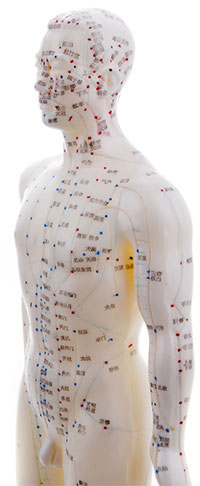 The word "acupuncture" is derived from two Latin words that mean "to penetrate with a needle" - (acus = needle, punctura = to penetrate).
The word "acupuncture" is derived from two Latin words that mean "to penetrate with a needle" - (acus = needle, punctura = to penetrate).
By inserting tiny, hair-like needles, acupuncture stimulates specific points on the body to increase the blood flow and oxygen, stimulate specific organs, and vitalize the nervous system. It also triggers the release of the body’s internal chemicals that have pain-relieving properties, such as endorphins and enkephalins.
By stimulating the flow of blood and oxygen to the organs and systems of the body, acupuncture does not focus on treating the symptoms as with traditional medicine, but instead it aims to restore balance to the body. It provides the body with a tool to naturally heal itself.
Acupuncture is one of the four pillars of Oriental medicine (also known as traditional Chinese medicine). It is classed as a complete system of healthcare dating back over 3,000 years. These branches include:
 Acupuncture
Acupuncture
 Chinese Herbalism & Nutrition
Chinese Herbalism & Nutrition
 Chinese Massage & Manipulation (Tui Na)
Chinese Massage & Manipulation (Tui Na)
 QiGong
QiGong
Similar to other natural approaches to healthcare, acupuncture is based on the concept that disease can only inhabit a body when a person's emotions and state of mind are out of balance.
Qi: Flow of Energy? Or Flow of Oxygen?
Learn more about how the simple mistranslation of two important words led the western world to confuse oxygen with energy, and blood vessels with meridians.
|
Two Methods of Acupuncture
Various methods of acupuncture have been developed in different Asian countries and each method is dependent on the different interpretations of classical acupuncture texts. Two main forms universally recognized are:
- Chinese Classical Five Element Acupuncture (CF-EA)
A Taoist healing tradition brought to the west by the late Professor J. R. Worsley (The Worsley Institute)
- Japanese Classical Acupuncture
With Japanese classical acupuncture, needling techniques are uniquely subtle. Very thin needles are used, which makes it much easier to insert the needles without any pain. The resulting stimulation is milder than in Chinese Acupuncture.
American practices of acupuncture incorporate medical traditions from China, Japan, Korea, and other countries.
Let's take a close look at how acupuncture works, what conditions it treats, and what to expect during a typical acupuncture session.
The origin of acupuncture...
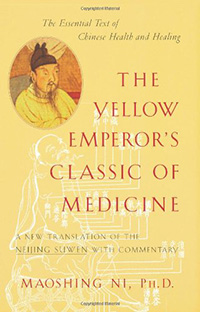 Acupuncture evolved from principles and philosophies unique to Oriental medicine. First references date back to the Han Dynasty in the ancient Chinese medical text "Huang Di Nei Jing" (The Yellow Emperor's Classic of Internal Medicine), originating between approximately 300 and 100 BC.
Acupuncture evolved from principles and philosophies unique to Oriental medicine. First references date back to the Han Dynasty in the ancient Chinese medical text "Huang Di Nei Jing" (The Yellow Emperor's Classic of Internal Medicine), originating between approximately 300 and 100 BC.
In the 17th century, Waichi Sugiyama developed the insertion tube, a small cylindrical tube through which the acupuncture needle is inserted. This insertion method is still used today by practitioners worldwide, and in Japan by over 90% of acupuncturists.
Acupuncture began to gain popularity in the US in the 1970's, when New York Times reporter James Reston wrote about how needles were used by Doctors in China to ease his pain after surgery.
In 1996, the US Food and Drug Administration (FDA) classified acupuncture needles as medical instruments, and approved the needles for use by qualified practitioners. The FDA requires that sterile, non-toxic needles be used and that they be labeled for single use by qualified practitioners only. Very few complications from the use of acupuncture have been reported to the FDA in view of the millions of people treated each year and the number of acupuncture needles used.
To prevent complications resulting from inadequate sterilization of needles and from improper delivery of treatments, practitioners always use a new set of disposable needles taken from a sealed package for each patient. Each treatment area is also swabbed with alcohol or another disinfectant before inserting needles. When not delivered properly, acupuncture has the potential to cause infection.
Respected & medically recognized...
Though acupuncture may seem strange to some people, not only has it received significant validation from the medical industry, but it is one of the most thoroughly researched and documented forms of natural healthcare. A series of controlled studies has shown evidence for the effectiveness of acupuncture in the treatment of a many conditions, including chronic pain management, fatigue, digestive problems, osteoarthritis, chemotherapy-induced nausea, back pain, asthma, painful menstrual cycles, incontinence, and migraine headaches.
Today, acupuncture has become an integral part of the healthcare system and is often offered in conjunction with other more traditional therapies. In the US, acupuncture has grown into what is now a common form of pain management therapy available in many pain management clinics and hospitals. At least 1/3 of pain treatment centers within the US provide acupuncture as a therapy. It is also either partially or completely covered by most of the major health insurance plans.
In November, 1997, the National Institute of Health (NIH) issued a report titled: "Acupuncture: The NIH Consensus Statement." It stated that acupuncture is a very useful method for treating many conditions, acknowledging that the possible side effects are considerably less adverse than other medical procedures, surgery or medications. In addition, the NIH made the recommendation to health insurance companies within the US to provide full coverage of acupuncture treatments for certain conditions. This is a significant advancement in the status of acupuncture, which has in turn influenced the acceptance of acupuncture throughout the world.
How does acupuncture work?...
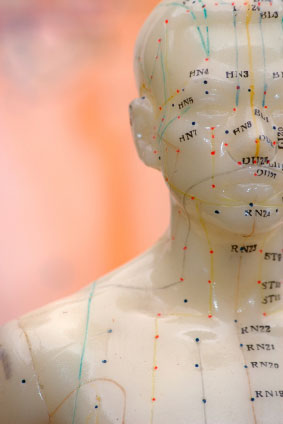 In Oriental medicine, there are 20 blood vessels throughout the body. These vessels consist of 12 main channels and 8 secondary channels that form a network of channels. The 8 secondary channels supply blood to the main 12 channels.
In Oriental medicine, there are 20 blood vessels throughout the body. These vessels consist of 12 main channels and 8 secondary channels that form a network of channels. The 8 secondary channels supply blood to the main 12 channels.
Each vessel is related to an organ and system of the body:
- Lungs
- Heart
- Pericardium (heart protector)
- Liver
- Kidneys
- Spleen
- Small Intestine
- Triple Heater (regulates flow in 3 different heat sections of the body)
- Large Intestine
- Urinary Bladder
- Stomach
- Gall Bladder
If a vessel is blocked or congested, the organs and systems related to that vessel will be affected. The classical Chinese explanation is that oxygen flows in vessels in specific patterns throughout the body. These vessels are like rivers flowing throughout the body that irrigate and nourish the tissues. Any obstruction in the movement of the oxygen throughout these vessels affects the flow of oxygen throughout the rest of the body.
Along these vessels, there are approximately 2,000 "acupoints." These acupoints are the locations where the vessels rise closest to the surface of the body. Of these 2,000 acupoints, more than 400 are classified by the World Health Organization (WHO). Each acupoint is listed by name, number, and the vessel to which it belongs. The acupuncturist learns how to diagnose the symptoms of a patient by feeling for a special "pulse" under the surface of the skin. The insertion of a needle into an acupoint triggers specific reactions within the body:
- The stimulation of oxygen and blood flow
- The stimulation of the body's built-in healing mechanisms
- The release of endorphins, norepinephrine and enkephalins, the body's natural painkillers
- The reduction of pain
- A relaxing of tense, shortened muscles
Acupuncture can very effectively increase the flow of oxygen throughout the body to help resolve health issues. The points that the practitioner chooses to stimulate are often not at the same location in the body where the symptoms are. This is because points are all connected via the blood vessels flowing throughout the body.
Many studies have been focused on understanding the mechanism of acupuncture. Pre-clinical studies have documented acupuncture's effects, but despite the medical technology available today, modern physicists have yet to fully explain how acupuncture works within the framework of the western medicine. The modern scientific explanation is that stimulating the acupoints located along the vessels causes the nervous system to release chemicals and/or hormones in the muscles, spinal cord, and brain. These chemicals either change the experience of pain, or influence the body's own internal regulating systems.
The following two points have been established:
- The stimulation of acupoints causes changes in brain chemistry, sensation, and involuntary bodily functions. This is done by altering the release of neurotransmitters (chemicals produced by the body that modify nerve impulses) and neurohormones, affecting the parts of the central nervous system related to sensation and involuntary bodily functions, such as immune reactions, regulation of blood pressure, blood flow, and body temperature. Immune system cells are then directed to specific sites in the body that are injured or more vulnerable to disease.
- Many acupoints are near nerves that cause the muscles to respond when stimulated. The stimulated muscle sends a message to the central nervous system (the brain and spinal cord), causing the release of endorphins (morphine-like chemicals produced in our own bodies during times of pain or stress). Endorphins, along with other neurotransmitters, block the message of pain from being delivered up to the brain. This may help explain the pain relief experienced from acupuncture.
What conditions does acupuncture treat?...
Even though acupuncture is often associated with pain relief, it is considered very effective at treating a variety of health conditions. Often, those who undergo acupuncture have conditions that resist modern medical care, or that traditional doctors struggle to formally diagnose.
The World Health Organization recognizes the use of acupuncture in the treatment of more than 40 medical problems, including:
- Psychological issues (worry, anxiety, and tension)
- Morning sickness
- Urinary and reproductive disorders
- Digestive disorders such as constipation and heartburn
- Back and neck pain
- Sciatica
- Respiratory disorders
- Skin conditions
- Neurological and muscular disorders
- Edema
- Postpartum depression
- Allergies
- Spastic colon
- Incontinence (see below)
- Pregnancy issues, including breech birth and to stimulate labor (see below)
- Chronic pain
- Headaches
- Arthritis
- Cancer, nausea from chemotherapy
- Aids
- Hormonal disorders
- Post-operative nausea and vomiting from anesthesia and narcotic painkillers
- Drug and nicotine addictions
Acupuncture can also improve the functioning of the immune system.
Acupuncture can be effective as the only treatment used, or can support other medical treatments. Medical doctors may combine acupuncture with fewer conventional drugs, or with drugs to control surgery-related pain. Using such combinations, some doctors have found it possible to achieve complete pain relief for some patients. For example, adding acupuncture sessions to antihistamine treatments can achieve comparable results to higher doses of using just the medication alone. This means that side effects from medications (such as drowsiness or stomach upset) are also decreased.
Pregnancy
Breech Birth
Acupuncture can be used for breech birth (a baby that needs to be rotated in the uterus). The technique is typically used 32-34 weeks into the pregnancy, as past the 36th week, there is usually not enough room to rotate the fetus). It is applied twice each day for up to 10 days, though most babies turn within 3 days. Once turned into the appropriate headfirst position, the technique is no longer used as it may cause the baby to turn back to the breech position.
Inducing Labor
Needling specific points to induce labor after due date pregnancies can help stimulate uterine contractions.
Incontinence
An incontinence study conducted in Sweden included 15 elderly women who received 12 acupuncture treatments. Evaluations were performed upon patient discharge and at 1 and 3 month follow-ups. Almost all measurements were significantly improved. Global scorings showed that 12 of the 15 women considered themselves improved, even at the 3 month follow-up.(1)
What special equipment is used?...
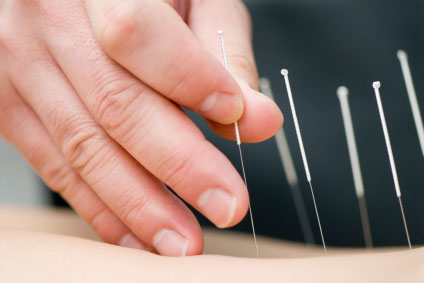 The most commonly used equipment in acupuncture is solid, very fine needles made of stainless steel. The FDA requires that sterile, non-toxic needles be used that are labeled for single use by qualified practitioners only.
The most commonly used equipment in acupuncture is solid, very fine needles made of stainless steel. The FDA requires that sterile, non-toxic needles be used that are labeled for single use by qualified practitioners only.
Other forms of stimulation may be also used in conjunction with needles to intensify the effect of the treatment:
Fire Cupping
Fire cupping is method used by acupuncturists for diseases caused by cold and damp. Cupping acts by increasing the flow of blood to the area being treated. A glass or a plastic cup is placed on the thigh or the chest, after a burning paper has been inserted into it and removed. A slight pull is exerted on the skin, caused by the light vacuum of the cup against the skin. After a few minutes, the cup slips off the skin leaving a faint red mark. Hand operated vacuum pumps are also now available for cupping.
Fire cupping in varying forms has also been found in the folk medicine of Vietnam, the Balkans, and modern Greece.
Moxibuxtion
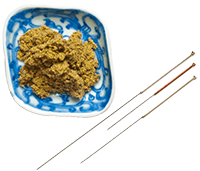 Moxibuxtion is the burning of the herb moxa (dried mugwort leaves) on or above the skin to stimulate heat at an acupuncture point. The name moxa is derived from the Japanese term "mogusa," which means "burning herb."
Moxibuxtion is the burning of the herb moxa (dried mugwort leaves) on or above the skin to stimulate heat at an acupuncture point. The name moxa is derived from the Japanese term "mogusa," which means "burning herb."
Moxa can be applied using 3 different methods:
- Directly to the skin, where the acupuncturist holds a smoldering moxa stick approximately half an inch away from the skin.
- Indirectly, with a slice of ginger or garlic placed over the acupoint. The moxa is then placed on top and ignited.
- A small ball of moxa wool may be placed on the head of an acupuncture needle, which is then lit, allowing the needle to transmit the heat directly to the acupoint through the needle.
Moxa disperses the cold and is used in the treatment of diseases that are often caused by wind, cold, and damp, such as chronic bronchitis, bronchial asthma, chronic diarrhea, arthritis, and other conditions.
Electrical Stimulation
Conducting pads are placed over the skin and a low frequency electrical current is passed through them. When electricity is applied, a tingling sensation is common and it can be modulated by the acupuncturist if any discomfort is experienced.
Gua Sha
Gua Sha is a method used in Oriental medicine that provides relief to tight and painful muscles (e.g. a stiff neck). The skin is first lubricated, and then scraped with a blunt edge such as a spoon.
Acupoints may also be stimulated with pressure, lasers, and ultrasound.
A Typical Acupuncture Session
 During the first office visit, the Acupuncturist will ask for detailed information about your health condition and may ask other questions about lifestyle, stress factors, and your past health history.
During the first office visit, the Acupuncturist will ask for detailed information about your health condition and may ask other questions about lifestyle, stress factors, and your past health history.
Treatment will take place in a private room that often has a very relaxing and comforting ambiance, such as soft colors and soothing music. Most practitioners use a massage table or therapy bed. The client is comfortably clothed, with both socks and shoes removed. Clothing should be loose and comfortable, with top and pants/skirt as separate articles of clothing to allow the Acupuncturist to easily reach different areas of the body.
The acupuncturist will swab each acupoint being treated with alcohol before inserting a very fine needle into the skin at carefully chosen acupoints. The number of needles used during treatment and their location can vary, as can the depths at which they are inserted. Sometimes, a ruler may be used to measure the distance between various parts of the body to calculate the location of the acupoints (e.g. the distance from pelvic bone to knee that varies from person to person.
Reputable acupuncturists always use disposable and sterile needles and it is extremely rare to have complications from needle usage. Improper needle placement or a defect in the needle can cause soreness and pain during treatment, two reasons why it is very important to receive treatment from a qualified Acupuncturist. Because the needles used in acupuncture are much smaller than the standard hypodermic needle, they do not draw blood. They are also solid, not hollow.
After a series of needles have been inserted, they are left in place for a time period ranging from several minutes to an hour. The client is often left alone with the lights dimmed and some fall asleep during this time.
Needling techniques and treatment devices may be varied from treatment to treatment as the response to each treatment is observed. This helps stimulate new sources of healing within the body.
How Does Acupuncture Feel?
People experience Acupuncture differently, but most feel either no pain or an extremely minimal "prick" as the tiny needles are inserted (much less than the prick experienced during a medical injection because the acupuncture needle is so fine). Most report the sensation of the needle insertion as "barely noticeable." Occasionally, a mild tingling or achiness may be experienced during the session. A sensation similar to a mild electrical impulse can sometimes be felt in an area far from the insertion point that is affected by the increased blood and oxygen flow.
Usually, clients with acute conditions leave in less discomfort than when they walked in. With chronic conditions, often the effects are too subtle to immediately notice. As the treatments progress, the improvements become more and more apparent.
Depending on the treatment and acupoints being stimulated, some people feel energized by treatment while others feel relaxed. Occasionally, an acupoint may feel tender after the treatment, but this sensation fades quickly. In general, a sense of relaxation and well-being occurs both during and after treatments.
Following an acupuncture treatment, it is very important not to not engage in strenuous activities such as aerobics to allow the body to adjust and respond to the treatment.
How Many Treatments Will I Need?
After completing a health assessment, the acupuncturist will provide information on the estimated number of treatments needed and how much each will cost. The cost varies, but averages $50-75 per treatment and discounts often available based on the number of treatments required. As acupuncture is now covered by many insurance plans, check to see what coverage you may have and how many sessions are included. Some insurance plans cover acupuncture only for certain conditions, or to a limited extent.
One acupuncture session does not typically result in lasting pain relief. Usually, a series of sessions over a short period of time are needed (e.g. 2 or 3 times each week for several weeks). Relief may be felt immediately, but it may take several treatments before the relief is long-lasting. Based on client feedback, the acupuncturist may stimulate the same or different acupoints from the previous session.
With drugs, people often develop a tolerance or the need for an increased dosage to achieve the same required effect. This does not happen with acupuncture.
No Side Effects
Acupuncture is safe for people of all ages, including children, pregnant women, and the elderly. According to a recent, year-long study conducted at the Children's Hospital in Boston, pediatric acupuncture has proven successful in treating chronic pain conditions without any side effects. It is considered very beneficial for problems during pregnancy, a time when many medicines are contraindicated.
Acupuncture is particularly helpful for elderly people, especially as they are unable to take many painkillers that can interact with other drugs they have been prescribed. Acupuncture is often used to relieve joint pain and stiffness.
Acupuncture For Pets & Horses
The animal world is also experiencing the wonderful benefits of a more natural approach to medicine, including acupuncture and chiropractic. Many veterinarian clinics now integrate these services into their practice, and mobile acupuncturists are now offering these services to horses.
Choosing a Qualified Practitioner
More and more medical doctors, including neurologists, anesthesiologists, and specialists in various medicine, are either becoming trained in acupuncture or have developed a referral network that includes acupuncturists. Today, there are approximately 30,000 licensed acupuncturists in the US, 1/3 of which are located in California.(2)
Within the US
The regulation of acupuncture varies from country to country. Within the US, various states have established training standards and accreditation for licensed acupuncturists (also known as L.Ac.’s), with different requirements for obtaining a license to practice.
NCCAOM®
The National Certification Commission for Acupuncture & Oriental Medicine (NCCAOM) is a non-profit organization established to ensure entry-level competency in the practice of acupuncture and Oriental medicine (AOM) through professional certification. All NCCAOM certification programs are accredited by the National Commission for Certification Agencies (NCCA). Each state has its own laws and requirements (view state-by-state requirements).
ACAOM
Ask if your practitioner has completed their education at an educational facility accredited by The Accreditation Commission for Acupuncture & Oriental Medicine (ACAOM). This national accrediting agency is recognized by the US Dept. of Education for the accreditation of master's level certificate, diploma programs, and post-graduate doctoral programs in acupuncture and Oriental medicine.
Worldwide
In Canada, acupuncture is now regulated by the Traditional Chinese Medicine Act of 2006. In the UK, although the British Acupuncture Council website states it is the main regulating body for acupuncture, it is not legally regulated from a governmental perspective. In Australia, regulation varies from state to state. Other countries throughout the world have organizations who offer various training courses and certifications programs, however these programs may or may not regulated under the law.
Healing therapies...
View Sources & References
- (1) Department of Geriatrics, Rosenlund Hospital, Stockholm, Sweden
- HealthCMi
 The word "acupuncture" is derived from two Latin words that mean "to penetrate with a needle" - (acus = needle, punctura = to penetrate).
The word "acupuncture" is derived from two Latin words that mean "to penetrate with a needle" - (acus = needle, punctura = to penetrate). ![]() Acupuncture
Acupuncture ![]() Chinese Herbalism & Nutrition
Chinese Herbalism & Nutrition ![]() Chinese Massage & Manipulation (Tui Na)
Chinese Massage & Manipulation (Tui Na) ![]() QiGong
QiGong During the first office visit, the Acupuncturist will ask for detailed information about your health condition and may ask other questions about lifestyle, stress factors, and your past health history.
During the first office visit, the Acupuncturist will ask for detailed information about your health condition and may ask other questions about lifestyle, stress factors, and your past health history.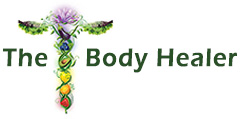




 In Oriental medicine, there are 20 blood vessels throughout the body. These vessels consist of 12 main channels and 8 secondary channels that form a network of channels. The 8 secondary channels supply blood to the main 12 channels.
In Oriental medicine, there are 20 blood vessels throughout the body. These vessels consist of 12 main channels and 8 secondary channels that form a network of channels. The 8 secondary channels supply blood to the main 12 channels. The most commonly used equipment in acupuncture is solid, very fine needles made of stainless steel. The FDA requires that sterile, non-toxic needles be used that are labeled for single use by qualified practitioners only.
The most commonly used equipment in acupuncture is solid, very fine needles made of stainless steel. The FDA requires that sterile, non-toxic needles be used that are labeled for single use by qualified practitioners only. Moxibuxtion is the burning of the herb moxa (dried mugwort leaves) on or above the skin to stimulate heat at an acupuncture point. The name moxa is derived from the Japanese term "mogusa," which means "burning herb."
Moxibuxtion is the burning of the herb moxa (dried mugwort leaves) on or above the skin to stimulate heat at an acupuncture point. The name moxa is derived from the Japanese term "mogusa," which means "burning herb."